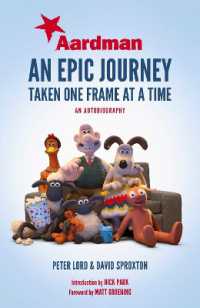Full Description
The curricular approach aligns the mission, goals, outcomes, and practices of a student affairs division, unit, or other unit that works to educate students beyond the classroom with those of the institution, and organizes intentional and developmentally sequenced strategies to facilitate student learning. In this book, the authors explain how to implement a curricular approach for educating students beyond the classroom. The book is based on more than a decade of implementing curricular approaches on multiple campuses, contributing to the scholarship on the curricular approach, and helping many campuses design, implement, and assess their student learning efforts. The curricular approach is rooted in scholarship and the connections between what we know about learning, assessment, pedagogy, and student success. For many who have been socialized in a more traditional programming approach, it may feel revolutionary. Yet, it is also obvious because it is straightforward and simple.
Contents
Foreword—Stephen John Quaye Preface 1. Why a Curricular Approach in Student Affairs? 2. What Is a Curricular Approach in Student Affairs? 3. How to Identify Learning Aims 4. How to Design, Implement, and Assess a Curricular Approach 5. Facilitating Student Learning Beyond the Classroom 6. Leadership for a Curricular Approach Appendix A. Ten Essential Elements for a Curricular Approach Appendix B. Traditional Approaches Versus Curricular Approach to Learning Beyond the Classroom Appendix C. Development and Refinement of Educational Aims Leading to the Development of Educational Plans Appendix D. Sample List of Artifacts Appendix E. Examples of Learning Aims Appendix F:Checklist for Assembling an Education Plan Appendix G. Sample Developmental Sequencing Chart Appendix H. Example of Mapping Learning Initiatives Across Departments Appendix I. Facilitation Guide Template Appendix J. Metacognition Appendix K. Some Potential Pedagogical Strategies Appendix L. The Divisional Barometer for the Curricular Approach in Student Affairs Appendix M. Recommended ResourcesReferences About the Authors Index








